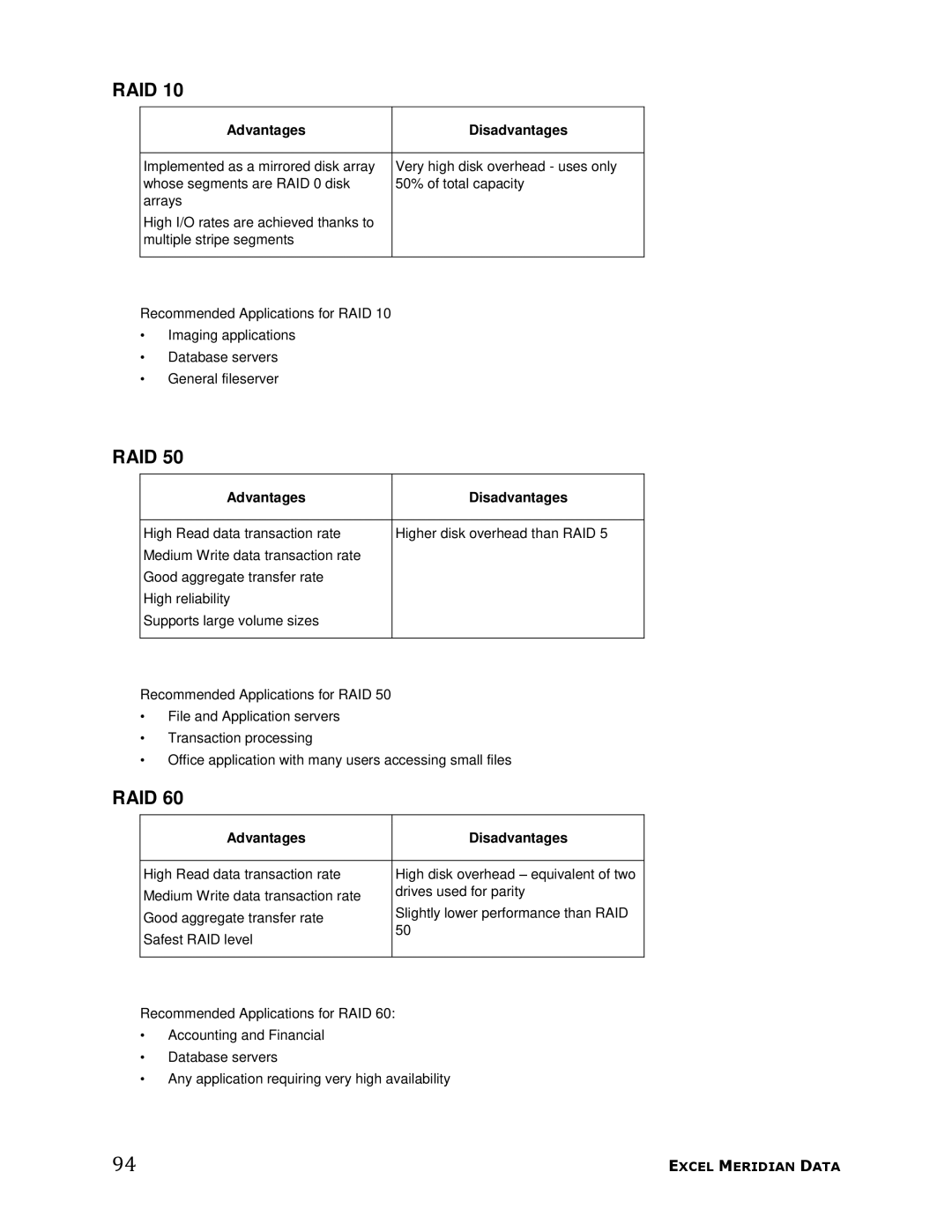RAID 10
Advantages | Disadvantages |
|
|
Implemented as a mirrored disk array | Very high disk overhead - uses only |
whose segments are RAID 0 disk | 50% of total capacity |
arrays |
|
High I/O rates are achieved thanks to |
|
multiple stripe segments |
|
|
|
Recommended Applications for RAID 10
•Imaging applications
•Database servers
•General fileserver
RAID 50
Advantages | Disadvantages |
|
|
High Read data transaction rate | Higher disk overhead than RAID 5 |
Medium Write data transaction rate |
|
Good aggregate transfer rate |
|
High reliability |
|
Supports large volume sizes |
|
|
|
Recommended Applications for RAID 50
•File and Application servers
•Transaction processing
•Office application with many users accessing small files
RAID 60
Advantages | Disadvantages | |
|
| |
High Read data transaction rate | High disk overhead – equivalent of two | |
Medium Write data transaction rate | drives used for parity | |
| ||
Good aggregate transfer rate | Slightly lower performance than RAID | |
50 | ||
Safest RAID level | ||
| ||
|
|
Recommended Applications for RAID 60:
•Accounting and Financial
•Database servers
•Any application requiring very high availability
94 | EXCEL MERIDIAN DATA |
